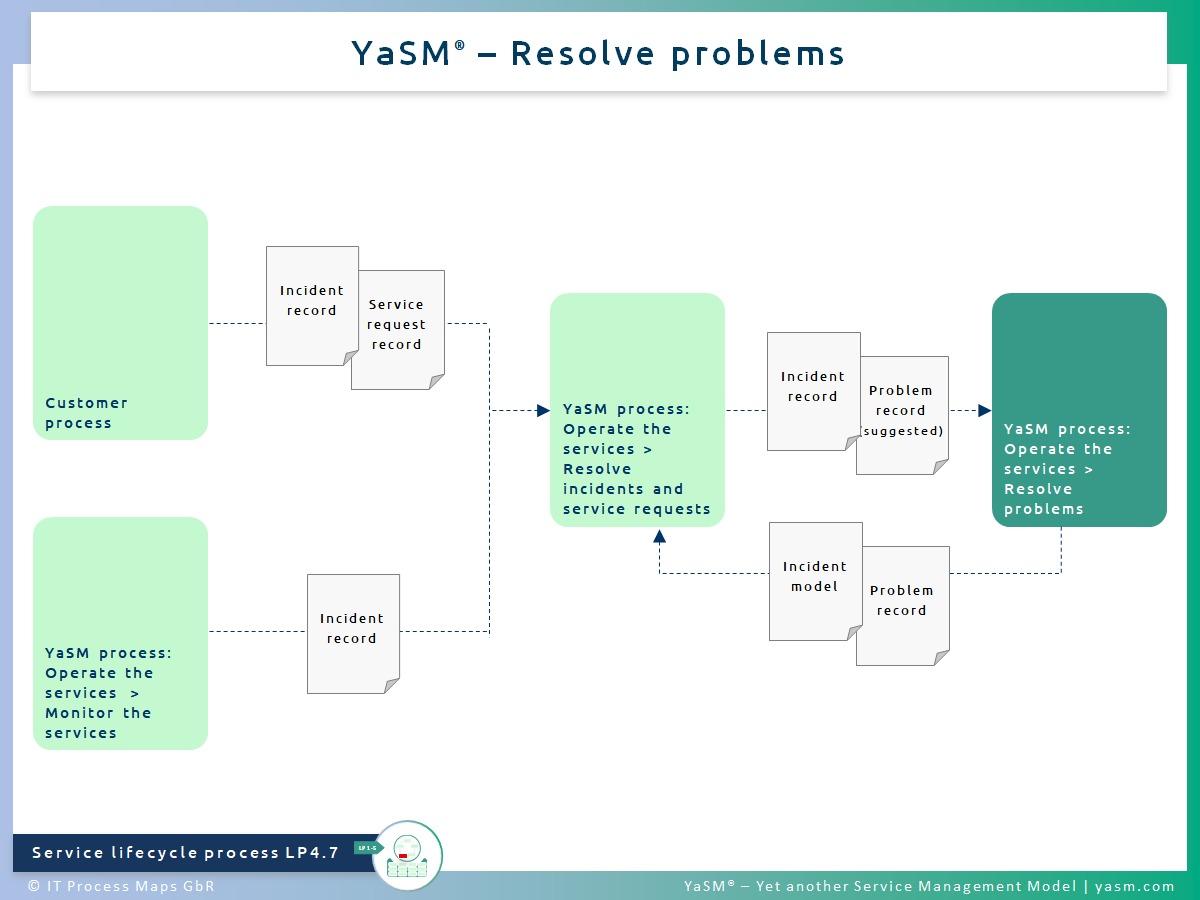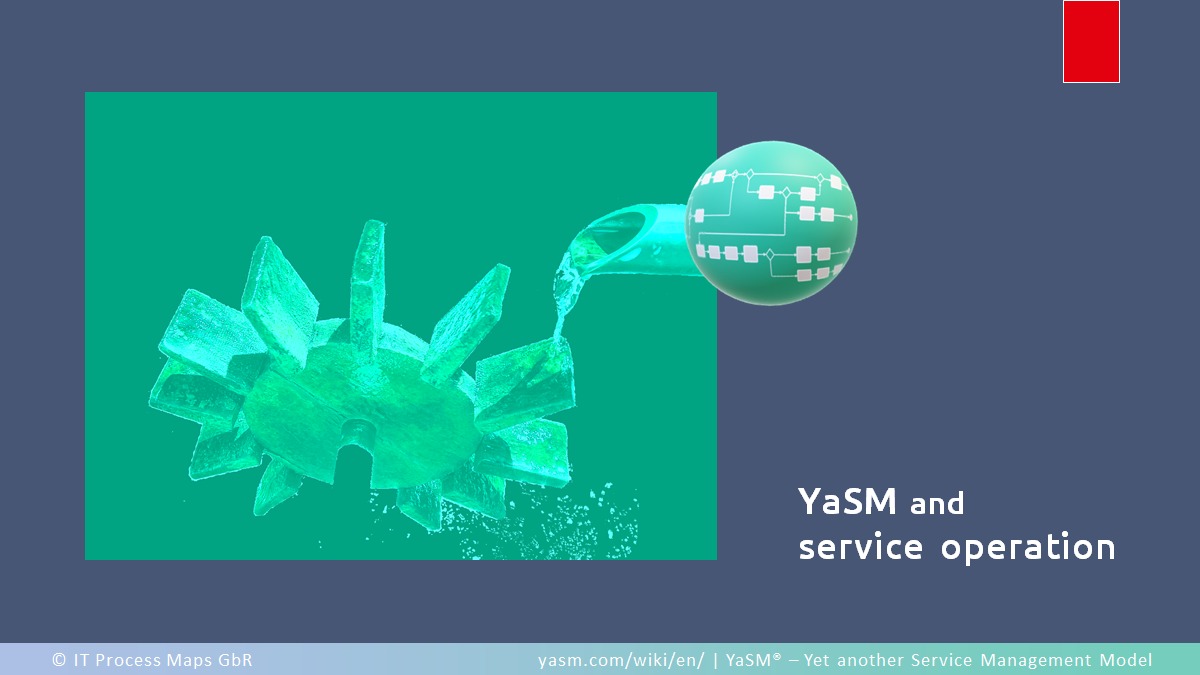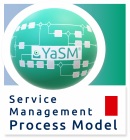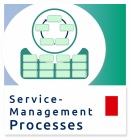LP4.7: Resolve problems: Difference between revisions
No edit summary |
No edit summary |
||
| Line 57: | Line 57: | ||
<p><i><u>Compatibility</u>: YaSM problem management is <a href="/wiki/en/index.php/YaSM_and_ISO_20000#ISO_20000_requirements_and_related_service_management_processes" title="YaSM und ISO 20000">aligned with ISO 20000</a>, the international standard for service management (see ISO/IEC 20000-1:2018, <a href="/wiki/en/index.php/YaSM_and_ISO_20000#Resolution-and-fulfilment" title="ISO 20000 section 8.6: Resolution and fulfilment">section 8.6</a>), and it <a href="/wiki/en/index.php/YaSM_and_ITIL#ITIL-4-Problem-management" title="ITIL 4 practices and YaSM processes: ITIL 4 problem management">corresponds to the practice of 'ITIL 4 problem management'</a>.</i></html> | <p><i><u>Compatibility</u>: YaSM problem management is <a href="/wiki/en/index.php/YaSM_and_ISO_20000#ISO_20000_requirements_and_related_service_management_processes" title="YaSM und ISO 20000">aligned with ISO 20000</a>, the international standard for service management (see ISO/IEC 20000-1:2018, <a href="/wiki/en/index.php/YaSM_and_ISO_20000#Resolution-and-fulfilment" title="ISO 20000 section 8.6: Resolution and fulfilment">section 8.6</a>), and it <a href="/wiki/en/index.php/YaSM_and_ITIL#ITIL-4-Problem-management" title="ITIL 4 practices and YaSM processes: ITIL 4 problem management">corresponds to the practice of 'ITIL 4 problem management'</a>.</i></html> | ||
==Sub-processes== | ==Sub-processes== | ||
<html>YaSM's problem management process has the following sub-processes:</p> | <html>YaSM's problem management process has the following sub-processes:</p> | ||
<!-- define schema.org/CreativeWork --> | <!-- define schema.org/CreativeWork --> | ||
| Line 71: | Line 69: | ||
<dd itemprop="description">Process objective: To improve overall availability of services by proactively identifying problems. This process aims to identify and solve problems and/ or provide suitable workarounds before (further) service incidents occur.</dd></dl> | <dd itemprop="description">Process objective: To improve overall availability of services by proactively identifying problems. This process aims to identify and solve problems and/ or provide suitable workarounds before (further) service incidents occur.</dd></dl> | ||
</div> | </div> | ||
<div itemid="https://yasm.com/wiki/en/index.php/LP4.7:_Resolve_problems#LP4.7.2" itemscope itemtype="https://schema.org/CreativeWork" itemref="md-type-subProcess"> | <div itemid="https://yasm.com/wiki/en/index.php/LP4.7:_Resolve_problems#LP4.7.2" itemscope itemtype="https://schema.org/CreativeWork" itemref="md-type-subProcess"> | ||
<meta itemprop="alternateName" content="YaSM problem resolution process LP4.7.2" /> | <meta itemprop="alternateName" content="YaSM problem resolution process LP4.7.2" /> | ||
| Line 77: | Line 74: | ||
<dd itemprop="description">Process objective: To record and prioritize the problems with appropriate diligence, in order to facilitate a swift and effective resolution.</dd></dl> | <dd itemprop="description">Process objective: To record and prioritize the problems with appropriate diligence, in order to facilitate a swift and effective resolution.</dd></dl> | ||
</div> | </div> | ||
<div itemid="https://yasm.com/wiki/en/index.php/LP4.7:_Resolve_problems#LP4.7.3" itemscope itemtype="https://schema.org/CreativeWork" itemref="md-type-subProcess"> | <div itemid="https://yasm.com/wiki/en/index.php/LP4.7:_Resolve_problems#LP4.7.3" itemscope itemtype="https://schema.org/CreativeWork" itemref="md-type-subProcess"> | ||
<meta itemprop="alternateName" content="YaSM problem resolution process LP4.7.3" /> | <meta itemprop="alternateName" content="YaSM problem resolution process LP4.7.3" /> | ||
| Line 83: | Line 79: | ||
<dd itemprop="description">Process objective: To identify the underlying causes of problems and to determine the most appropriate and economical problem solution. If possible, a temporary workaround should be supplied while no full solution is available.</dd></dl> | <dd itemprop="description">Process objective: To identify the underlying causes of problems and to determine the most appropriate and economical problem solution. If possible, a temporary workaround should be supplied while no full solution is available.</dd></dl> | ||
</div> | </div> | ||
<div itemid="https://yasm.com/wiki/en/index.php/LP4.7:_Resolve_problems#LP4.7.4" itemscope itemtype="https://schema.org/CreativeWork" itemref="md-type-subProcess"> | <div itemid="https://yasm.com/wiki/en/index.php/LP4.7:_Resolve_problems#LP4.7.4" itemscope itemtype="https://schema.org/CreativeWork" itemref="md-type-subProcess"> | ||
<meta itemprop="alternateName" content="YaSM problem resolution process LP4.7.4" /> | <meta itemprop="alternateName" content="YaSM problem resolution process LP4.7.4" /> | ||
| Line 89: | Line 84: | ||
<dd itemprop="description">Process objective: To constantly monitor outstanding problems with regards to their processing status, and to take corrective action as required.</dd></dl> | <dd itemprop="description">Process objective: To constantly monitor outstanding problems with regards to their processing status, and to take corrective action as required.</dd></dl> | ||
</div> | </div> | ||
<div itemid="https://yasm.com/wiki/en/index.php/LP4.7:_Resolve_problems#LP4.7.5" itemscope itemtype="https://schema.org/CreativeWork" itemref="md-type-subProcess"> | <div itemid="https://yasm.com/wiki/en/index.php/LP4.7:_Resolve_problems#LP4.7.5" itemscope itemtype="https://schema.org/CreativeWork" itemref="md-type-subProcess"> | ||
<meta itemprop="alternateName" content="YaSM problem resolution process LP4.7.5" /> | <meta itemprop="alternateName" content="YaSM problem resolution process LP4.7.5" /> | ||
| Line 95: | Line 89: | ||
<dd itemprop="description">Process objective: To ensure that the problem resolution has been successful and all related information is up-to-date.</dd></dl> | <dd itemprop="description">Process objective: To ensure that the problem resolution has been successful and all related information is up-to-date.</dd></dl> | ||
</div><!-- end of schema.org/CreativeWork --><p></html> | </div><!-- end of schema.org/CreativeWork --><p></html> | ||
==Process outputs== | ==Process outputs== | ||
| Line 107: | Line 99: | ||
<meta itemprop="alternateName" content="Problem resolution data objects" /> | <meta itemprop="alternateName" content="Problem resolution data objects" /> | ||
<p><span itemprop="description">This section lists the documents and records produced by the problem resolution process.</span> YaSM data objects <a href="#ydo" title="YaSM data object">[*]</a> are marked with an asterisk, while other objects are displayed in gray.</p> | <p><span itemprop="description">This section lists the documents and records produced by the problem resolution process.</span> YaSM data objects <a href="#ydo" title="YaSM data object">[*]</a> are marked with an asterisk, while other objects are displayed in gray.</p> | ||
<dl> | <dl> | ||
<div itemprop="hasDefinedTerm" itemscope itemtype=" | <div itemprop="hasDefinedTerm" itemscope itemtype="https://schema.org/DefinedTerm"> | ||
<dt itemprop="name">Incident model</dt> | <dt itemprop="name">Incident model</dt> | ||
<dd itemprop="description" style="margin-bottom: 1em;">An incident model contains the pre-defined steps that should be taken for dealing with a particular type of incident. The aim of providing incident models is to ensure that recurring incidents are handled efficiently and effectively. <a href="#ydo" title="YaSM data object">[*]</a></dd></div> | <dd itemprop="description" style="margin-bottom: 1em;">An incident model contains the pre-defined steps that should be taken for dealing with a particular type of incident. The aim of providing incident models is to ensure that recurring incidents are handled efficiently and effectively. <a href="#ydo" title="YaSM data object">[*]</a></dd></div> | ||
<div itemprop="hasDefinedTerm" itemscope itemtype=" | <div itemprop="hasDefinedTerm" itemscope itemtype="https://schema.org/DefinedTerm"> | ||
<dt itemprop="name" id="Problem-record">Problem record</dt> | <dt itemprop="name" id="Problem-record">Problem record</dt> | ||
<dd itemprop="description" style="margin-bottom: 1em;">A set of data with all details of a problem, documenting the history of the problem from registration to closure. A problem is defined as the underlying cause of one or more (potential) incidents, although the cause may not be known at the time a problem record is created. Often, a workaround is provided for a problem while a full resolution is not yet available. <a href="#ydo" title="YaSM data object">[*]</a></dd></div> | <dd itemprop="description" style="margin-bottom: 1em;">A set of data with all details of a problem, documenting the history of the problem from registration to closure. A problem is defined as the underlying cause of one or more (potential) incidents, although the cause may not be known at the time a problem record is created. Often, a workaround is provided for a problem while a full resolution is not yet available. <a href="#ydo" title="YaSM data object">[*]</a></dd></div> | ||
<div itemprop="hasDefinedTerm" itemscope itemtype=" | <div itemprop="hasDefinedTerm" itemscope itemtype="https://schema.org/DefinedTerm"> | ||
<dt itemprop="name">Recovery plan</dt> | <dt itemprop="name">Recovery plan</dt> | ||
<dd itemprop="description" style="margin-bottom: 1em;">Recovery plans contain detailed instructions for returning specific services and/ or systems to a working state, which often includes recovering data to a defined consistent state. <a href="#ydo" title="YaSM data object">[*]</a></dd></div> | <dd itemprop="description" style="margin-bottom: 1em;">Recovery plans contain detailed instructions for returning specific services and/ or systems to a working state, which often includes recovering data to a defined consistent state. <a href="#ydo" title="YaSM data object">[*]</a></dd></div> | ||
<div itemprop="hasDefinedTerm" itemscope itemtype=" | <div itemprop="hasDefinedTerm" itemscope itemtype="https://schema.org/DefinedTerm"> | ||
<dt itemprop="name">Service operation manual</dt> | <dt itemprop="name">Service operation manual</dt> | ||
<dd itemprop="description" style="margin-bottom: 1em;">A service operation manual specifies the activities required for the operation of a service and its underlying infrastructure. The information in the service operation manual is meant to describe the day-to-day tasks in a way that is useful for operational staff. Some instructions related to the operation of particular applications, systems or other infrastructure components may be documented in separate technical manuals or 'standard operating procedures (SOPs)'. <a href="#ydo" title="YaSM data object">[*]</a></dd></div> | <dd itemprop="description" style="margin-bottom: 1em;">A service operation manual specifies the activities required for the operation of a service and its underlying infrastructure. The information in the service operation manual is meant to describe the day-to-day tasks in a way that is useful for operational staff. Some instructions related to the operation of particular applications, systems or other infrastructure components may be documented in separate technical manuals or 'standard operating procedures (SOPs)'. <a href="#ydo" title="YaSM data object">[*]</a></dd></div> | ||
<div style="color:#636363" itemprop="hasDefinedTerm" itemscope itemtype=" | <div style="color:#636363" itemprop="hasDefinedTerm" itemscope itemtype="https://schema.org/DefinedTerm"> | ||
<dt itemprop="name">Suggested process modification</dt> | <dt itemprop="name">Suggested process modification</dt> | ||
<dd itemprop="description" style="margin-bottom: 1em;">A suggestion for modifying one or several service management processes. Suggestions for process modifications or improvements may originate from anywhere within the organization.</dd></div> | <dd itemprop="description" style="margin-bottom: 1em;">A suggestion for modifying one or several service management processes. Suggestions for process modifications or improvements may originate from anywhere within the organization.</dd></div> | ||
<div style="color:#636363" itemprop="hasDefinedTerm" itemscope itemtype=" | <div style="color:#636363" itemprop="hasDefinedTerm" itemscope itemtype="https://schema.org/DefinedTerm"> | ||
<dt itemprop="name">Suggested service modification</dt> | <dt itemprop="name">Suggested service modification</dt> | ||
<dd itemprop="description" style="margin-bottom: 1em;">A suggestion for modifying a service, for example to improve service quality or economics. Suggestions may originate from anywhere within or outside of the service provider organization.</dd></div> | <dd itemprop="description" style="margin-bottom: 1em;">A suggestion for modifying a service, for example to improve service quality or economics. Suggestions may originate from anywhere within or outside of the service provider organization.</dd></div> | ||
<div style="color:#636363" itemprop="hasDefinedTerm" itemscope itemtype=" | <div style="color:#636363" itemprop="hasDefinedTerm" itemscope itemtype="https://schema.org/DefinedTerm"> | ||
<dt itemprop="name">Support request</dt> | <dt itemprop="name">Support request</dt> | ||
<dd itemprop="description" style="margin-bottom: 1em;">A request to support the resolution of an incident or problem, usually issued from the incident or problem manager when further assistance is needed from technical experts or external suppliers.</dd></div> | <dd itemprop="description" style="margin-bottom: 1em;">A request to support the resolution of an incident or problem, usually issued from the incident or problem manager when further assistance is needed from technical experts or external suppliers.</dd></div> | ||
| Line 139: | Line 130: | ||
</p><p><span id="ydo"><strong>[*]</strong> <i>"YaSM data objects"</i> are those documents or records for which the YaSM model provides detailed recommendations: Every YaSM object has an associated checklist (see <a href="https://yasm.com/wiki/en/index.php/Service_Management_Checklists" title="Example: YaSM checklists and document templates">example</a>) describing its typical contents, and an associated lifecycle diagram depicting how the status of the object changes as it is created, updated, read and archived by various YaSM processes (see <a href="https://yasm.com/wiki/en/img/yasm-project/Yasm-object-lifecycle-diagram.jpg" title="Example: YaSM object lifecycle diagram (.JPG)">example</a>).</span> | </p><p><span id="ydo"><strong>[*]</strong> <i>"YaSM data objects"</i> are those documents or records for which the YaSM model provides detailed recommendations: Every YaSM object has an associated checklist (see <a href="https://yasm.com/wiki/en/index.php/Service_Management_Checklists" title="Example: YaSM checklists and document templates">example</a>) describing its typical contents, and an associated lifecycle diagram depicting how the status of the object changes as it is created, updated, read and archived by various YaSM processes (see <a href="https://yasm.com/wiki/en/img/yasm-project/Yasm-object-lifecycle-diagram.jpg" title="Example: YaSM object lifecycle diagram (.JPG)">example</a>).</span> | ||
</p><p><i>"Other objects"</i> are mostly informal data or information where YaSM has less strong views about their contents. There are no associated lifecycle diagrams or checklists.</html> | </p><p><i>"Other objects"</i> are mostly informal data or information where YaSM has less strong views about their contents. There are no associated lifecycle diagrams or checklists.</html> | ||
==Process metrics== | ==Process metrics== | ||
| Line 147: | Line 136: | ||
For suggestions of [[Service Management Metrics|suitable metrics]], please refer to the [[Service_Management_Metrics#Metrics_for_the_problem_resolution_process|list of metrics for the problem resolution process]]. | For suggestions of [[Service Management Metrics|suitable metrics]], please refer to the [[Service_Management_Metrics#Metrics_for_the_problem_resolution_process|list of metrics for the problem resolution process]]. | ||
==Roles and responsibilities== | ==Roles and responsibilities== | ||
| Line 203: | Line 190: | ||
<html><div itemid="https://yasm.com/wiki/en/img/yasm-process-definition/what-is-problem-management-process.jpg" itemscope itemtype="https://schema.org/ImageObject"> | <html><div itemid="https://yasm.com/wiki/en/img/yasm-process-definition/what-is-problem-management-process.jpg" itemscope itemtype="https://schema.org/ImageObject"> | ||
<a href="https://yasm.com/wiki/en/img/yasm-process-definition/what-is-problem-management-process.jpg" title="Problem management: process definition (.pdf)" itemprop="contentUrl"> | <a href="https://yasm.com/wiki/en/img/yasm-process-definition/what-is-problem-management-process.jpg" title="Problem management: process definition (.pdf)" itemprop="contentUrl"> | ||
<img style="display: block; float: left; margin-right: 20px" src="https://yasm.com/wiki/en/img/yasm-process-definition/what-is-problem-management-process.jpg" width="320" height=" | <img style="display: block; float: left; margin-left: 10px; margin-right: 20px" src="https://yasm.com/wiki/en/img/yasm-process-definition/what-is-problem-management-process.jpg" width="320" height="180" title="Problem management: process definition" alt="What is problem management? Definition of the problem resolution process LP4.7 from the YaSM service management framework." /> | ||
<meta itemprop="caption" content="Resolve problems | YaSM problem management | Process definition LP4.7" /> | <meta itemprop="caption" content="Resolve problems | YaSM problem management | Process definition LP4.7" /> | ||
<meta itemprop="width" content=" | <meta itemprop="width" content="1200" /> | ||
<meta itemprop="height" content=" | <meta itemprop="height" content="675" /> | ||
<div style="margin-left: | <meta itemprop="dateCreated" content="2017-06-30" /> | ||
<p style="margin-top: 0;">Is based on: The problem resolution process from the <a href="https://yasm.com/en/products/yasm-process-map" title="YaSM Process Map">YaSM Process Map</a>.</p> | <meta itemprop="datePublished" content="2017-09-16" /> | ||
<meta itemprop="dateModified" content="2021-06-29" /></a></div> | |||
<div style="margin-left: 5%; color:#636363"> | |||
<p style="margin-top: 0; word-wrap:normal;">Is based on: The problem resolution process from the <a href="https://yasm.com/en/products/yasm-process-map" title="YaSM Process Map">YaSM Process Map</a>.</p> | |||
<p>By:  Stefan Kempter <a href="https://www.linkedin.com/in/stefankempter"><img style="margin:0px 0px 0px 0px;" src="/wiki/en/img/yasm-wiki/bookmarking/linkedin.jpg" width="16" height="16" title="By: Stefan Kempter | Profile on LinkedIn" alt="Author: Stefan Kempter, IT Process Maps GbR" /></a>  and  Andrea Kempter <a href="https://www.linkedin.com/in/andreakempter"><img style="margin:0px 0px 0px 0px;" src="/wiki/en/img/yasm-wiki/bookmarking/linkedin.jpg" width="16" height="16" title="By: Andrea Kempter | Profile on LinkedIn" alt="Contributor: Andrea Kempter, IT Process Maps GbR" /></a>, IT Process Maps.<br style="clear:both;"/></div><p></html> | <p>By:  Stefan Kempter <a href="https://www.linkedin.com/in/stefankempter"><img style="margin:0px 0px 0px 0px;" src="/wiki/en/img/yasm-wiki/bookmarking/linkedin.jpg" width="16" height="16" title="By: Stefan Kempter | Profile on LinkedIn" alt="Author: Stefan Kempter, IT Process Maps GbR" /></a>  and  Andrea Kempter <a href="https://www.linkedin.com/in/andreakempter"><img style="margin:0px 0px 0px 0px;" src="/wiki/en/img/yasm-wiki/bookmarking/linkedin.jpg" width="16" height="16" title="By: Andrea Kempter | Profile on LinkedIn" alt="Contributor: Andrea Kempter, IT Process Maps GbR" /></a>, IT Process Maps.<br style="clear:both;"/></div><p></html> | ||
==Related articles== | ==Related articles== | ||
<html><a href="https://yasm.com/wiki/en/index.php/Service_Operation"><img src="https://yasm.com/wiki/en/img/yasm-service-management/service-operation.jpg" title="Service operation according to YaSM" alt="Operational processes, and in particular incident management and problem management, are probably the most widely known (and used) parts of ITSM best practice." style="display: block; float: left; margin-right: 20px" width="320" height="180"/></a> | <html><a href="https://yasm.com/wiki/en/index.php/Service_Operation"><img src="https://yasm.com/wiki/en/img/yasm-service-management/service-operation.jpg" title="Service operation according to YaSM" alt="Operational processes, and in particular incident management and problem management, are probably the most widely known (and used) parts of ITSM best practice." style="display: block; float: left; margin-left: 10px; margin-right: 20px" width="320" height="180"/></a> | ||
<div style="margin-left: | <div style="margin-left: 5%; color:#636363"> | ||
<p style="margin-top: 0;"><a href="https://yasm.com/wiki/en/index.php/Service_Operation" title="From the YaSM Blog: Service operation according to YaSM">Service operation according to YaSM</a></p> | <p style="margin-top: 0; word-wrap:normal;"><a href="https://yasm.com/wiki/en/index.php/Service_Operation" title="From the YaSM Blog: Service operation according to YaSM">Service operation according to YaSM</a></p> | ||
<p><small>by: Stefan Kempter</small></p> | <p><small>by: Stefan Kempter</small></p> | ||
<p>Operational processes, and in particular incident management and problem management, are probably the most widely known (and used) parts of IT service management best practice. <a href="https://yasm.com/wiki/en/index.php/Service_Operation">[...]</a></p></div><p> | <p>Operational processes, and in particular incident management and problem management, are probably the most widely known (and used) parts of IT service management best practice. <a href="https://yasm.com/wiki/en/index.php/Service_Operation">[...]</a></p></div><p> | ||
| Line 226: | Line 214: | ||
<p><small> | <p><small> | ||
<span itemprop="breadcrumb" itemscope itemtype=" | <span itemprop="breadcrumb" itemscope itemtype="https://schema.org/BreadcrumbList"> | ||
<span itemprop="itemListElement" itemscope itemtype=" | <span itemprop="itemListElement" itemscope itemtype="https://schema.org/ListItem"> | ||
<a itemprop="item" href="https://yasm.com/wiki/en/index.php/LP4.7:_Resolve_problems#Process_description"> | <a itemprop="item" href="https://yasm.com/wiki/en/index.php/LP4.7:_Resolve_problems#Process_description"> | ||
<span itemprop="name">Process description</span></a> | <span itemprop="name">Process description</span></a> | ||
<meta itemprop="position" content="1" /></span> › | <meta itemprop="position" content="1" /></span> › | ||
<span itemprop="itemListElement" itemscope itemtype=" | <span itemprop="itemListElement" itemscope itemtype="https://schema.org/ListItem"> | ||
<a itemprop="item" href="https://yasm.com/wiki/en/index.php/LP4.7:_Resolve_problems#Sub-processes"> | <a itemprop="item" href="https://yasm.com/wiki/en/index.php/LP4.7:_Resolve_problems#Sub-processes"> | ||
<span itemprop="name">Sub-processes</span></a> | <span itemprop="name">Sub-processes</span></a> | ||
<meta itemprop="position" content="2" /></span> › | <meta itemprop="position" content="2" /></span> › | ||
<span itemprop="itemListElement" itemscope itemtype=" | <span itemprop="itemListElement" itemscope itemtype="https://schema.org/ListItem"> | ||
<a itemprop="item" href="https://yasm.com/wiki/en/index.php/LP4.7:_Resolve_problems#Process_outputs"> | <a itemprop="item" href="https://yasm.com/wiki/en/index.php/LP4.7:_Resolve_problems#Process_outputs"> | ||
<span itemprop="name">Process outputs</span></a> | <span itemprop="name">Process outputs</span></a> | ||
<meta itemprop="position" content="3" /></span> › | <meta itemprop="position" content="3" /></span> › | ||
<span itemprop="itemListElement" itemscope itemtype=" | <span itemprop="itemListElement" itemscope itemtype="https://schema.org/ListItem"> | ||
<a itemprop="item" href="https://yasm.com/wiki/en/index.php/LP4.7:_Resolve_problems#Process_metrics"> | <a itemprop="item" href="https://yasm.com/wiki/en/index.php/LP4.7:_Resolve_problems#Process_metrics"> | ||
<span itemprop="name">Metrics</span></a> | <span itemprop="name">Metrics</span></a> | ||
<meta itemprop="position" content="4" /></span> › | <meta itemprop="position" content="4" /></span> › | ||
<span itemprop="itemListElement" itemscope itemtype=" | <span itemprop="itemListElement" itemscope itemtype="https://schema.org/ListItem"> | ||
<a itemprop="item" href="https://yasm.com/wiki/en/index.php/LP4.7:_Resolve_problems#Roles_and_responsibilities"> | <a itemprop="item" href="https://yasm.com/wiki/en/index.php/LP4.7:_Resolve_problems#Roles_and_responsibilities"> | ||
<span itemprop="name">Roles</span></a> | <span itemprop="name">Roles</span></a> | ||
| Line 289: | Line 277: | ||
[[Category:YaSM process]] | [[Category:YaSM process]] | ||
<!-- --- --> | <!-- --- --> | ||
Revision as of 18:44, 29 June 2021
Process name: Resolve problems - Part of: Service lifecycle processes - Operate the services
Previous process: Resolve incidents and service requests
Process description
The problem management process in YaSM (fig. 1) is about managing the lifecycle of all problems, where a problem is the underlying cause of one or several (potential) incidents. The primary objective of the problem resolution process is to prevent service incidents from happening, and to minimize the impact of incidents which cannot be prevented.
Compatibility: YaSM problem management is aligned with ISO 20000, the international standard for service management (see ISO/IEC 20000-1:2018, section 8.6), and it corresponds to the practice of 'ITIL 4 problem management'.
Sub-processes
YaSM's problem management process has the following sub-processes:
- LP4.7.1: Pro-actively identify problems
- Process objective: To improve overall availability of services by proactively identifying problems. This process aims to identify and solve problems and/ or provide suitable workarounds before (further) service incidents occur.
- LP4.7.2: Categorize and prioritize problems
- Process objective: To record and prioritize the problems with appropriate diligence, in order to facilitate a swift and effective resolution.
- LP4.7.3: Analyze and resolve problems
- Process objective: To identify the underlying causes of problems and to determine the most appropriate and economical problem solution. If possible, a temporary workaround should be supplied while no full solution is available.
- LP4.7.4: Monitor outstanding problems
- Process objective: To constantly monitor outstanding problems with regards to their processing status, and to take corrective action as required.
- LP4.7.5: Close problems
- Process objective: To ensure that the problem resolution has been successful and all related information is up-to-date.
Process outputs
This section lists the documents and records produced by the problem resolution process. YaSM data objects [*] are marked with an asterisk, while other objects are displayed in gray.
- Incident model
- An incident model contains the pre-defined steps that should be taken for dealing with a particular type of incident. The aim of providing incident models is to ensure that recurring incidents are handled efficiently and effectively. [*]
- Problem record
- A set of data with all details of a problem, documenting the history of the problem from registration to closure. A problem is defined as the underlying cause of one or more (potential) incidents, although the cause may not be known at the time a problem record is created. Often, a workaround is provided for a problem while a full resolution is not yet available. [*]
- Recovery plan
- Recovery plans contain detailed instructions for returning specific services and/ or systems to a working state, which often includes recovering data to a defined consistent state. [*]
- Service operation manual
- A service operation manual specifies the activities required for the operation of a service and its underlying infrastructure. The information in the service operation manual is meant to describe the day-to-day tasks in a way that is useful for operational staff. Some instructions related to the operation of particular applications, systems or other infrastructure components may be documented in separate technical manuals or 'standard operating procedures (SOPs)'. [*]
- Suggested process modification
- A suggestion for modifying one or several service management processes. Suggestions for process modifications or improvements may originate from anywhere within the organization.
- Suggested service modification
- A suggestion for modifying a service, for example to improve service quality or economics. Suggestions may originate from anywhere within or outside of the service provider organization.
- Support request
- A request to support the resolution of an incident or problem, usually issued from the incident or problem manager when further assistance is needed from technical experts or external suppliers.
Notes:
[*] "YaSM data objects" are those documents or records for which the YaSM model provides detailed recommendations: Every YaSM object has an associated checklist (see example) describing its typical contents, and an associated lifecycle diagram depicting how the status of the object changes as it is created, updated, read and archived by various YaSM processes (see example).
"Other objects" are mostly informal data or information where YaSM has less strong views about their contents. There are no associated lifecycle diagrams or checklists.
Process metrics
Process metrics are used, for example, to assess if the service management processes are running according to expectations.
For suggestions of suitable metrics, please refer to the list of metrics for the problem resolution process.
Roles and responsibilities
Process owner: Problem manager
- The problem manager is responsible for managing the lifecycle of all problems, where the primary objective is to prevent incidents from happening if possible, and to minimize the impact of incidents that cannot be prevented. Apart from resolving the underlying causes of (potential) incidents, the problem manager often provides workarounds while a full solution is not yet available.
| YaSM role / sub-process | Problem manager | Service owner | Technical domain expert | |
|---|---|---|---|---|
| LP4.7.1 | Pro-actively identify problems | AR | - | - |
| LP4.7.2 | Categorize and prioritize problems | AR | - | - |
| LP4.7.3 | Analyze and resolve problems | AR | R | R |
| LP4.7.4 | Monitor outstanding problems | AR | - | - |
| LP4.7.5 | Close problems | AR | - | - |
Notes
Is based on: The problem resolution process from the YaSM Process Map.
Related articles
Service operation according to YaSM
by: Stefan Kempter
Operational processes, and in particular incident management and problem management, are probably the most widely known (and used) parts of IT service management best practice. [...]
Process description › Sub-processes › Process outputs › Metrics › Roles







